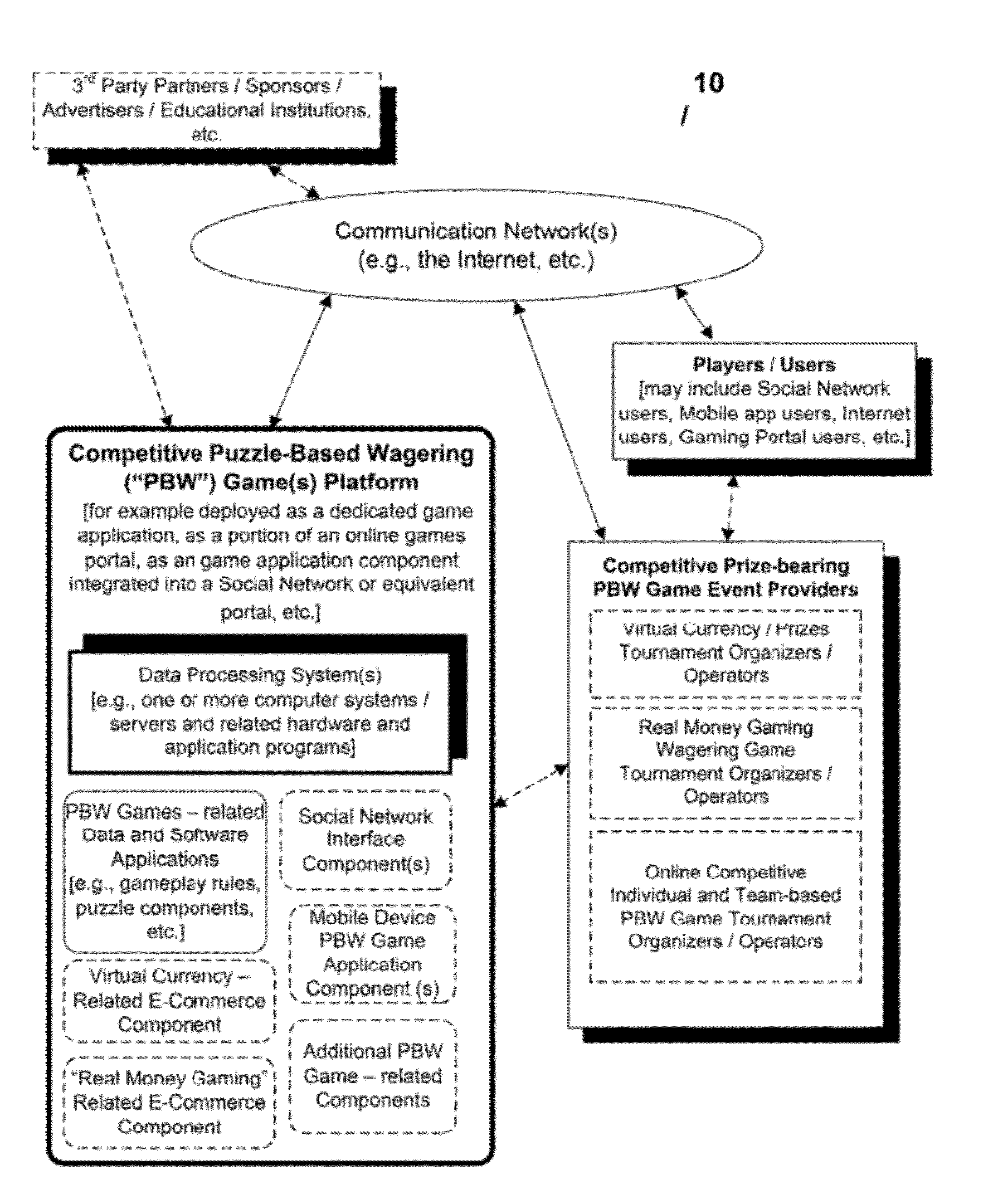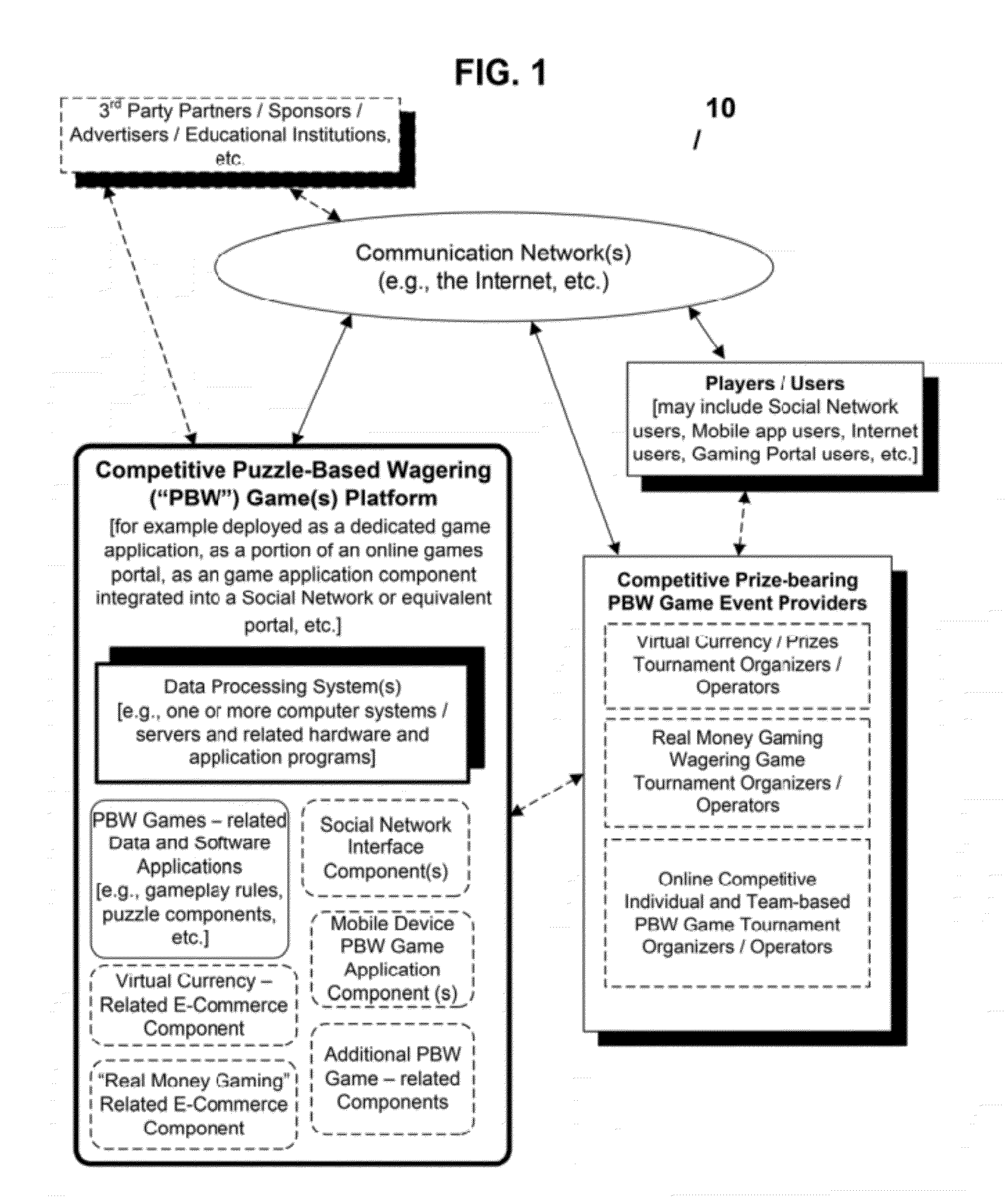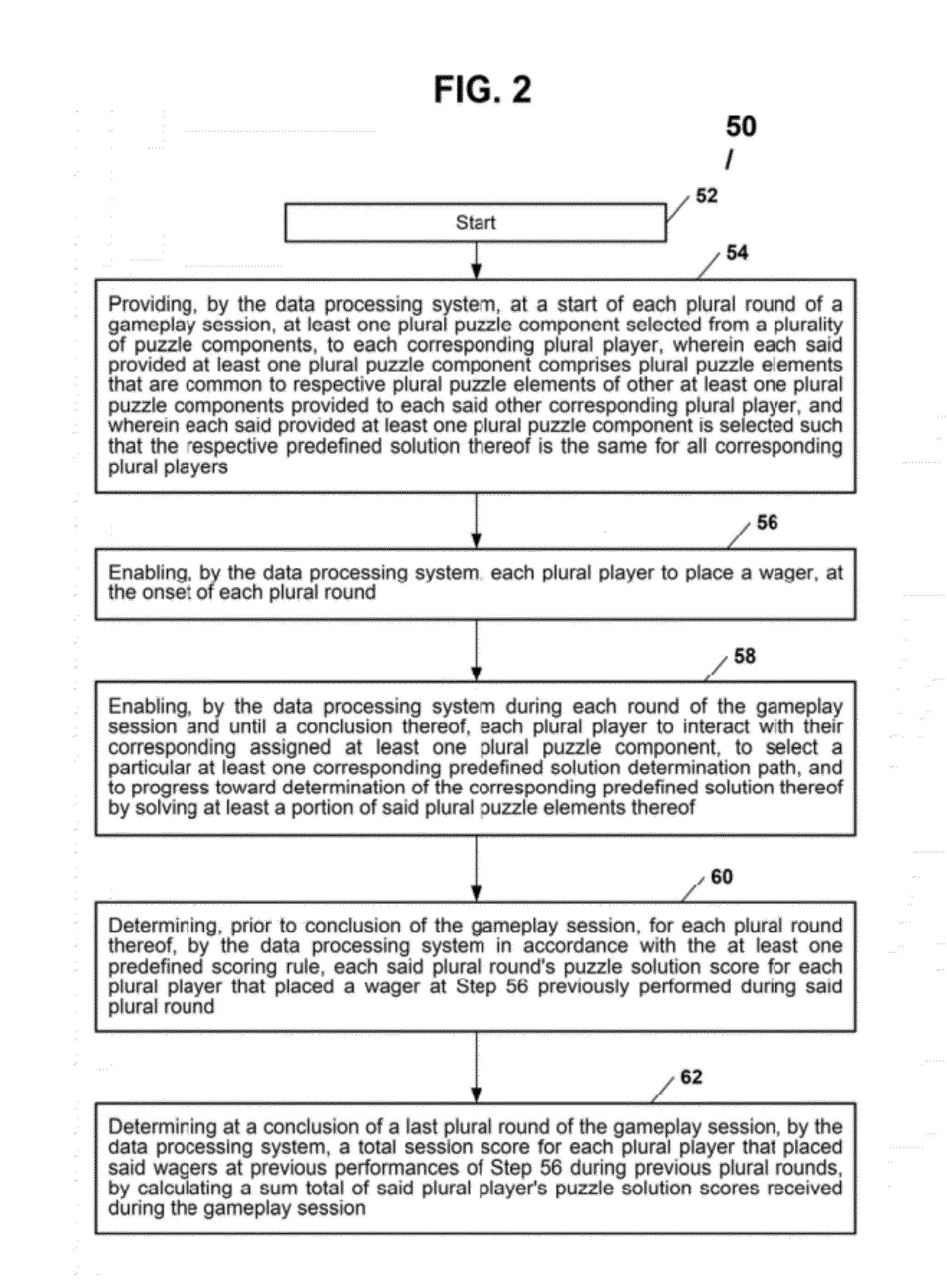System and method for providing and managing a competitive puzzle-based game having at least one risk element
a competitive, puzzle-based game technology, applied in indoor games, sports equipment, instruments, etc., can solve the problems of low adoption rate, failure to hold user interest, and typical casual game offerings that provide little satisfaction to most users, etc., to achieve the effect of being readily utilized
- Summary
- Abstract
- Description
- Claims
- Application Information
AI Technical Summary
Benefits of technology
Problems solved by technology
Method used
Image
Examples
exemplary embodiment # 1
Exemplary Embodiment #1: Pattern Matching Game / Word-Search Puzzle
[0072]Referring now to FIGS. 3A-3C, a set of exemplary schematic diagrams illustrating process steps 10-36 representative of a first exemplary alternate embodiment of the inventive game method of FIG. 2, implemented as a PBW Game Method 100 utilizing “pattern recognition” type puzzle components and elements (e.g., such as Wordsearch puzzles, etc.)[0073]Materials / game elements required: suitable writing instruments, writing surfaces (i.e., paper, preferably graph paper), a timer (e.g., a wristwatch, clock, stopwatch, sundial or any suitable timing device that allows one to calculate minutes and / or seconds), chips (e.g., poker chips, coins, cookies, or any suitable token representative of some predetermined value), and a dictionary (or any suitable / equivalent source of information).[0074]Players: at least 3.
[0075]Pre-Game Preparation:[0076]Preferably, each game comprises a predetermined set of gameplay rules that compris...
PUM
 Login to View More
Login to View More Abstract
Description
Claims
Application Information
 Login to View More
Login to View More - R&D
- Intellectual Property
- Life Sciences
- Materials
- Tech Scout
- Unparalleled Data Quality
- Higher Quality Content
- 60% Fewer Hallucinations
Browse by: Latest US Patents, China's latest patents, Technical Efficacy Thesaurus, Application Domain, Technology Topic, Popular Technical Reports.
© 2025 PatSnap. All rights reserved.Legal|Privacy policy|Modern Slavery Act Transparency Statement|Sitemap|About US| Contact US: help@patsnap.com



